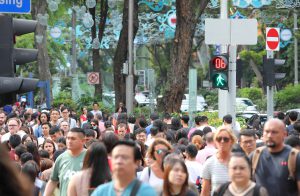Particle exposure and inhaled dose during commuting in Singapore
June 5, 2021

Initiated by the United Nations in 1974 to raise awareness of issues pertaining to marine pollution, human overpopulation, global warming, and illegal wildlife crime, World Environment Day is observed every 5 June. Each year, a new theme is presented for corporations, communities, and non-governmental organizations to campaign for. The theme for 2019 was ‘Beat Air Pollution’, with China as the host nation.
In 2017, Singapore public transportation experienced approximately 7.26 million commuters a day, 4.7 million of which were via buses and taxis. These commuters are exposed to high levels of pollutants, specifically particles smaller than 2.5 mm in size (PM2.5) and ultrafine particles (UFP). In order to study the particle concentrations that commuters inhale and are exposed to, former NUS student Sok Huang Tan, Professor Matthias Roth (NUS Department of Geography), and Dr Erik Velasco (Singapore-MIT Alliance for Research and Technology) investigated ‘Particle exposure and inhaled dose during commuting in Singapore’ (Atmospheric Environment, 2017).
At Orchard Road, the authors compared the exposure of people to a variety of pollutants when walking and utilising motorised transportation. The researchers commuted from door-to-door using four transportation modes (walking, bus, taxi, and subway [MRT]). This was to mimic typical commuting patterns. The researchers discovered that taking the MRT was the most significant in reducing exposure to PM2.5. This was much lower compared to pedestrians who breathed in approximately 2.6 to 3.2 times more PM2.5 and UFP while waiting for transport next to roads. Nonetheless, air-conditioning and circulation systems used in these transportation modes reduced exposure to and inhalation of particles.
In contrast, walking was the least healthy mode of commuting. Not only did the outdoor settings expose commuters to transient sources of pollution (e.g. smoking), the longer travelling time and higher pollutant concentrations throughout the journey caused the greatest exposure to and inhalation of pollutions. From these findings, the authors suggest that health implications from inhaling particles may challenge present understandings that increased cardiovascular health outweighs the harm from exposure to pollution.
Read the full article here.
